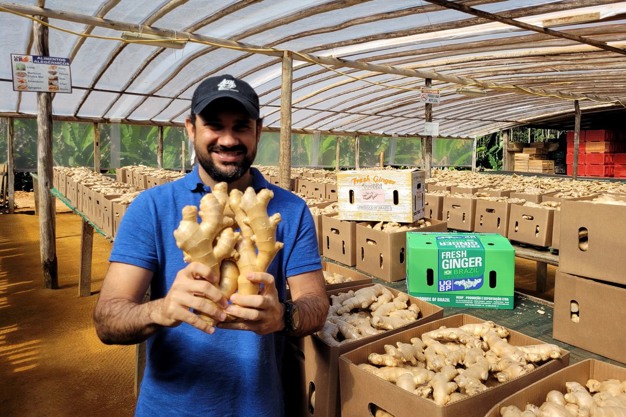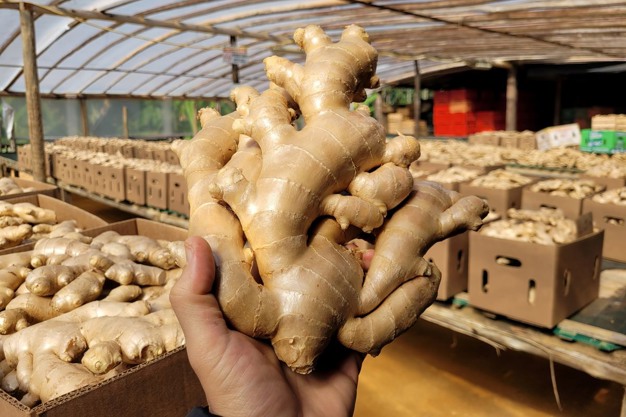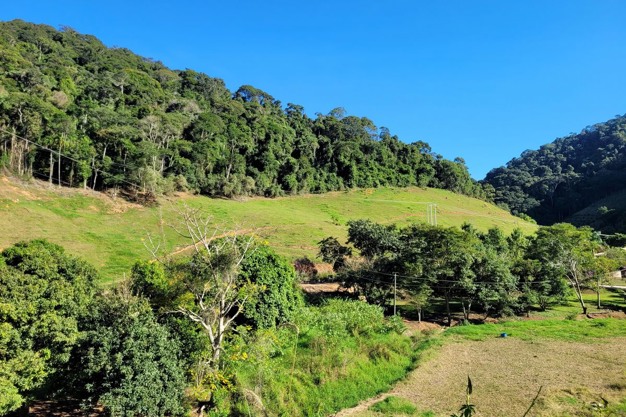Brazil has a year-round ginger season, but volumes are lower during the first part of the season, between January and May. During that time, product is shipped to the United States and Europe by air. As soon as the product is mature enough, around June/July, vessels are the main form of transportation. "About 70 percent of our ginger goes to the U.S. and the remaining 30 percent is shipped to Europe," says Fred Tavares with UGBP USA / Crown Global. A small part is trucked to neighboring country Argentina.

Fred Tavares proudly shows Brazilian ginger.
China's exports
Other ginger growing nations around the world include China, Peru, India, Costa Rica, Thailand, and Nigeria. China has always been the largest exporter of ginger, but in the past decade, the country has lost market share to other countries, including Brazil. About 10 to 15 years ago, 63 percent of U.S. ginger imports originated China. However, that number has decreased and today, about 44 percent of ginger imported by the U.S. is coming from China. Brazil on the other hand, has been able to gain market share in the U.S. in the past decade. In 2011, the U.S. sourced about five percent of its ginger volume in Brazil and today, closer to 10 percent of total imports originate Brazil. Peru also strengthened its position to the U.S. during that time.
Nevertheless, China continues to have significant impact on Brazil's ginger industry. One of China's big competitive advantages is the relatively low cost of shipping to the U.S. "The route used to go through Egypt, which was the least expensive option. Due to the Red Sea crisis, this route is no longer available and has been replaced by the more expensive alternative via South Africa," Tavares said. "When it comes to quality however, ginger from Brazil is preferred as it is very fresh. China is not afraid to send ginger that has been stored or is wet."
Demand for ginger has been stable and good. It has increased in the past 10 years and received a boost during the covid crisis because of its health benefits. Since then, demand has only continued to go up. In response to growing demand, production has also increased and amounts to about 450,000 acres globally now.

Reduction in price
What has been challenging for Brazil's ginger industry is a reduction in the price of ginger. "This is a more recent development from the past few years," commented Tavares. In 2020, the price of ginger amounted to $1.56/kg., but in 2022 this number had come down to $0.97/kg. As a result of the covid pandemic, the market for ginger was very strong in 2020 and 2021. However, things turned around in 2022 when there was more volume than the market asked for. On top of that, input costs have gone up and net profits have come down as a result.

 For more information:
For more information:
Fred Tavares
UGBP
Tel: +1 305 365 7811
[email protected]
www.ugbp.com










